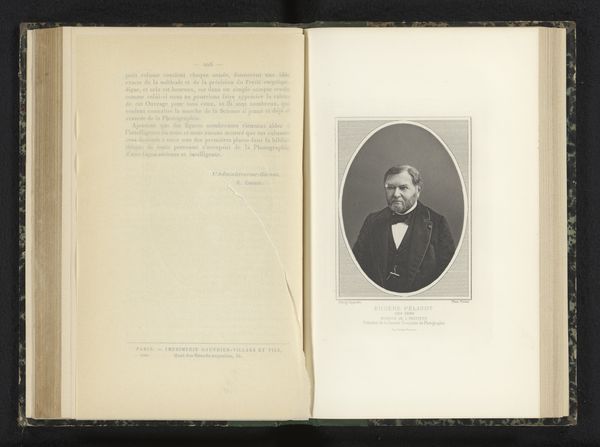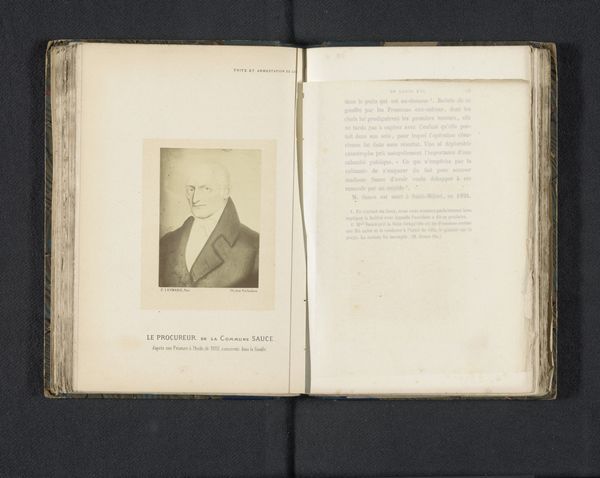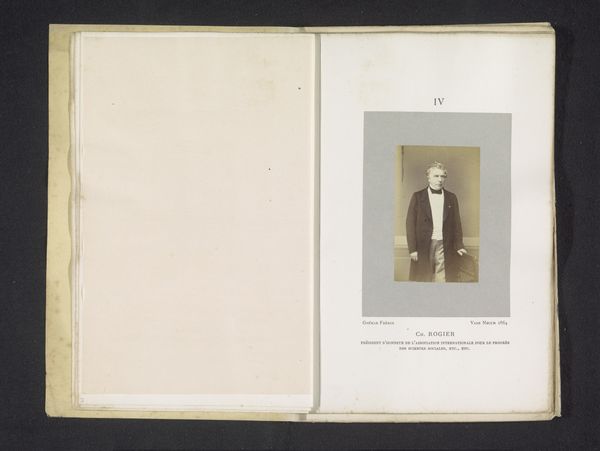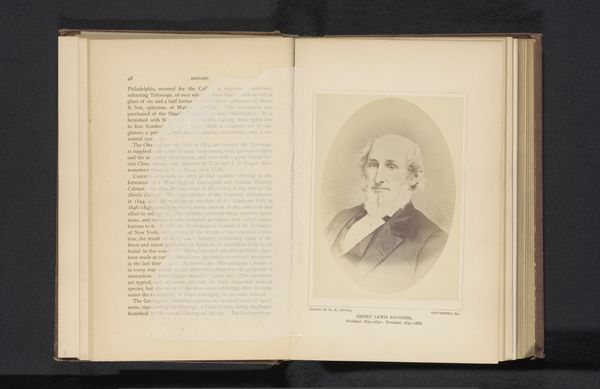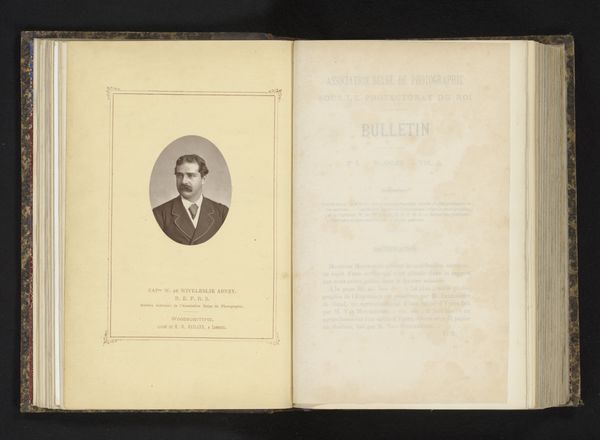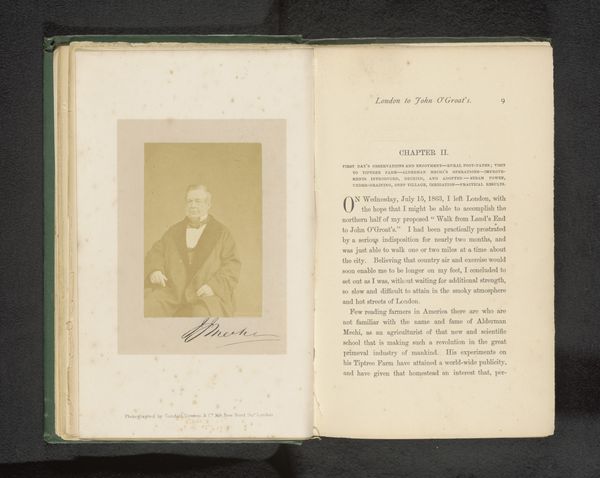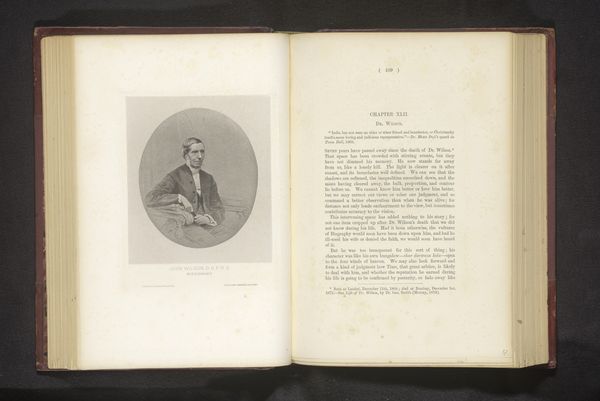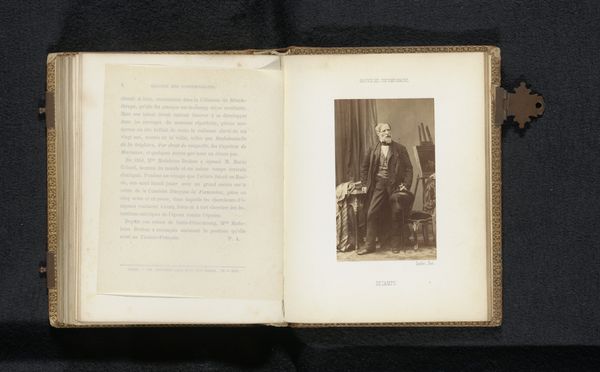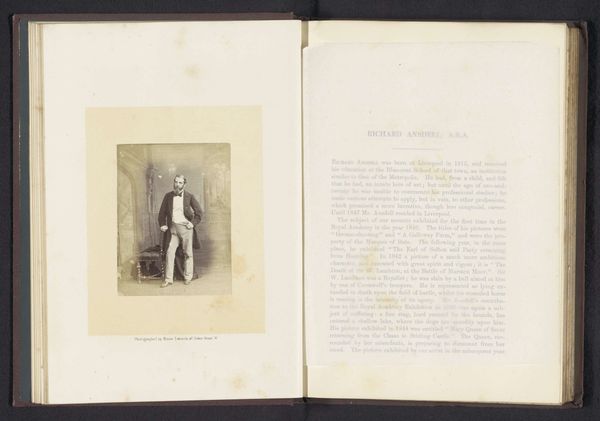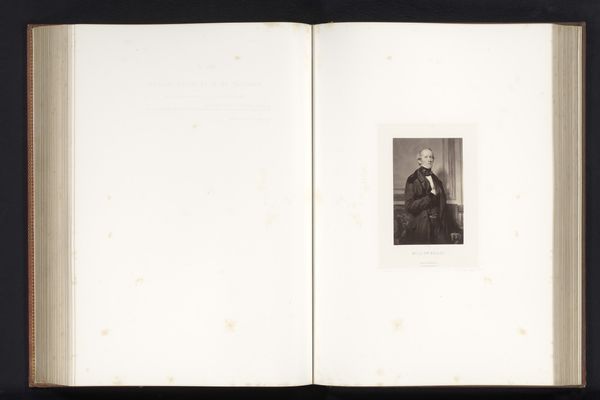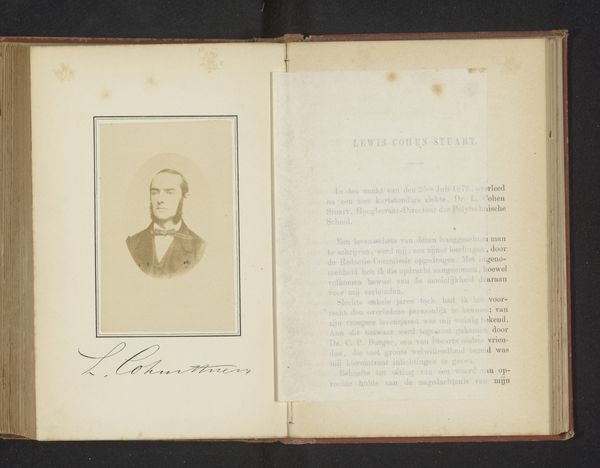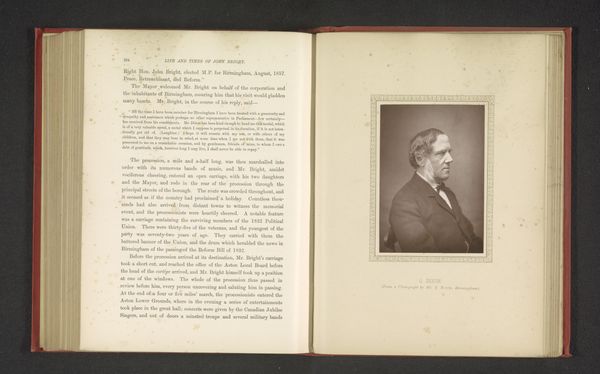
print, photography
#
portrait
# print
#
book
#
photography
#
realism
Dimensions: height 85 mm, width 69 mm
Copyright: Rijks Museum: Open Domain
Editor: Here we have a photographic print, a portrait of Jean-Léon Le Prevost, dating from before 1890. The portrait is within an open book. I find the presentation so formal, almost reverential. What can you tell me about the social context for displaying portraits this way? Curator: This method of displaying a portrait photograph within a book is intriguing. It speaks to the public role of individuals, doesn’t it? Before the age of easily reproduced images, consider what it meant to dedicate a page, maybe even a chapter, of a printed book to someone's likeness. Do you think this suggests anything about Le Prevost’s status, perhaps within a particular social circle or institution? Editor: I suppose so. Embedding the photo in a book like this definitely elevates Le Prevost. He's not just anyone; he's book-worthy. Did the subject’s profession determine the medium, then? Curator: It’s not necessarily profession but how the forces of class, recognition, and access to these technologies intersected. Photographic portraits were becoming more common but including one in a book signaled something very specific, particularly before 1890. Was the book for general sale, or a private, limited edition? Who was meant to see it? And why? These questions are key. Editor: I see what you mean. It makes you wonder who had the power to be immortalized in print and how that affected the public perception of different people. Curator: Exactly! It shows how the seemingly simple act of portraiture is tied to social and even political structures. I wonder if similar publications influenced later visual strategies, and how. Editor: This definitely made me look at the artwork in a different light! Curator: Likewise, it prompts valuable reflection on how images, and their contexts, shape history and memory.
Comments
No comments
Be the first to comment and join the conversation on the ultimate creative platform.
